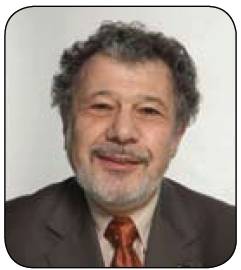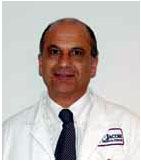Thoughts on the 30th Anniversary of Jacobi 2:
December 16,2007
The date will probably pass unnoticed, without formal recognition by FDNY administration, and forgotten to all but a few who know that this was the day that launched NYC*EMS into modern prehospital medicine 30 years ago.
The pilot Paramedic program begun in 1974 with 2 units out of Jacobi Hospital in the Bronx had proven itself, Federal Grant money had been obtained, and Jacobi 2 started training in March 1977. The Paramedic program would continue for 14 more Jacobi classes and 3 Bellevue classes, before becoming the responsibility of the EMS Academy.
On December 16, 1977 Jacobi 2 graduated with little notice or fanfare. Only a small keg party in the nurses lounge of the hospital penthouse. A brief few days off and we were to report to our new stations.
Bellevue, Metropolitan and Kings County were about to receive their first paramedics units. But only on tours 2 and 3! Queens and Staten Island would not see paramedics until the next class graduated. If you had an MI on tour 1 in NYC, you were out of luck unless a crew wanted some OT.
With the exception of the established buses at Jacobi, this meant taking the relic begrudgingly coaxed out of the station lineup, repairing and cleaning it up, then putting together all the newly distributed ALS gear. There were no telemetry radios except for Jacobi. Your senior partner for half your week was a Jacobi 1 Medic, many of whom were not enamored about being transferred from Jacobi. He was your Medical Control. "Mike...can I give more Atropine?" Morphine and Valium would not be on the menu for some time.
The half week you worked with the partner from your class, there were no protocol options, no terminating an arrest or the ability to consult with someone who was sure of what they were doing. The two of you would conference in the corner of the apartment you were in and come up with a game plan.
Our official public graduation ceremony wouldn't take place until April 7 at the School of Nursing at Bellevue Hospital . The first MAC exam would not occur for another week.
So off I went..Rookie Paramedic.... .Medicuts , Rotating Tourniquets and Esophageal Obturator in hand.
Mark Peck, "The Senior" Paramedic
20th Anniversary of Jacobi 1

PARAMEDIC PROGRAM DIRECTOR-
Dr. Sheldon Jacobson, Director-Emergency Services. Bronx Municipal Hospital, Professior- Albert Einstein College of Medicine Institute of Emergency Medicine
(photo December 1977- Jacobi 2 Graduation Party)
JULY 2009 | EMERGENCY MEDICINE www.emedmag.com Sheldon Jacobson, M.D .
.
1938-2009
EDITORIAL
By Neal Flomenbaum, MD Editor-in-Chief
>>Shelly saw a desperate need for competent emergency care in the early 1970s.<<
Sheldon Jacobson, MD, emergency medicine’s longest-serving board member, editor of this journal’s “Errors in Emergency Practice” column since 1978, and chairman of emergency medicine at Mount Sinai Medical Center in New York City, died on June 30 after a brief illness.
Shelly’s lifetime “stats” in emergency medicine are off the scoreboard. Originally trained in
internal medicine and gastroenterology, Shelly saw a desperate need for competent emergency care in the early 1970s and over the next four decades started the first paramedic training program (1974) and the first emergency medicine residency (1975) in New York, as well as one of the nation’s first nurse practitioner programs to ensure continuity of care after an ED visit. Shelly established three departments of emergency medicine: at Albert Einstein/Jacobi Hospital in the Bronx, Hospital of the University of Pennsylvania, and Mount Sinai. More than 30 of the paramedics Shelly trained are now physicians, and physicians and medical students who worked with him in the mid-1970s went on to direct or chair most of the academic departments of emergency medicine in or near New York City.
But Shelly’s true legacy will be the hundreds of thousands of patients whose lives he helped save and whose care he improved, along with the thousands of students, residents, and attendings he taught. E-mail messages from all over the country reacting to the death of “Dr. J” provided evidence of just how many lives Shelly touched and how many other EM programs he helped establish through his advice and counsel. Terms that appeared repeatedly were kind, gracious, compassionate, warm, humble, pioneer, mentor, role model, educator, innovator, and “mensch.” Shelly was all of these and more.
Everyone seems to have at least one favorite Shelly Jacobson story. One of mine involves my first encounter with heatstroke, during the summer of my internship at Jacobi Hospital in 1973, when New York City was experiencing a late-summer heat wave. None of the many nursing homes surrounding Jacobi had air-conditioning, and many of the elderly residents were on medications that interfered with their bodies’ tenuous ability to dissipate heat. On the third morning of the heat wave, an elderly resident whose temperature was 106˚F (or higher) was brought to the ED, followed by another and another, until there were 12.
The ED had a tub room that could be used for patients with heatstroke who required rapid
cooling in ice water. The only other enclosure available for heatstroke victims was one plastic backyard “kiddie pool.” So after the second heatstroke victim arrived, we had ice and an increasing number of critically ill patients, but we couldn’t figure out how to put the two together.
A young and very creative director, Sheldon Jacobson, MD, stood in the center of the ED and loudly instructed us to lift up the side rails of the stretchers, pull out the ends of the sheets, drape them over the side rails, and pack our heatstroke patients in ice. When one of us foolishly asked what to do about the water dripping on the floor, Shelly calmly replied, “Have you ever heard of a mop?”
At the end of the day, 11 patientssurvived a condition that would have otherwise been lethal, and only one succumbed to her underlying illness. There were also 12 puddles of water on the floor and one intern who began to think very seriously that the “ER” might be a really interesting place to practice medicine….
For those of us who knew and loved Shelly Jacobson, emergency medicine can never be the same without him. For everyone else, it will always be so much better because of him. n
More on Dr. Jacobsons Life
JUNE 2010 | EMERGENCY MEDICINE www.emedmag.com Transitions:
Gary Lombardi M.D.
EDITORIAL
By Neal Flomenbaum, MD Editor-in-Chief
>>Gary Lombardi’s achievements in both prehospital care and the ED show what can result from a seamless transition of care from one setting to the other.<<
In the office of our emergency medicine residency director is a slightly faded picture of two young men, each with a foot resting on the rear bumper of a rebadged school bus that had been reconfigured as a mobile emergency room van, or MERVAN. In the late 1970s and 1980s in New York City, MERVANs were assigned to each borough, the one in the picture having been stationed by the ambulance entrance to the emergency department of Jacobi Hospital in the Bronx.
The paramedic on the right side of the picture is a young Wallace Carter, who went on to become an emergency physician at Jacobi, then the EM residency director at NYU/Bellevue, and now the founding residency director of the NewYork-Presbyterian residency program. The paramedic on the left of the photograph is a young Gary Lombardi, who also went on to become an emergency physician and, until his untimely death last October, was the associate director of what is now the Jacobi Medical Center ED. That the two paramedic partners in the picture would become physicians—as did more than 30 other EMT-Ps from those early paramedic classes—is a tribute both to the pioneering efforts of the late Shelly Jacobson, MD, and also to the close working relationships that emergency physicians, nurses, nurse practitioners, physician assistants, paramedics, EMTs, and techs have always had with one another in the emergency department. In thousands of daily interactions that take place in EDs over extremely ill patients and under less than ideal conditions, these dedicated health professionals function as smoothly and precisely as a well-oiled machine or a symphony orchestra.
But the number of paramedics who eventually become MDs and DOs is also a reflection of the spirit and talents of some highly motivated health care providers who are determined to become physicians and “conduct” those ED orchestras. Gary Lombardi, like several other members of the first few paramedic classes, was not even an EMT when he began his paramedic training; he was an MVO, or motor vehicle operator, paired with an EMT on the ambulance. Later, he was the first member of his paramedic class to become a physician, graduating from the Albert Einstein College of Medicine in the Bronx in 1982 and from the Einstein/Jacobi EM residency in 1985. Upon completion of his training, he joined the EM faculty there and was a mainstay of the department for the next 24 years.
Even after Gary became a physician, he continued his prehospital care activities until 9 months before his death. An FDNY medical control physician, he provided online direction to the city’s 911 paramedics when the standing protocols were not sufficient. Gary also coauthored a 1994 JAMA study that found that less than 2% of New York City out-of-hospital cardiac arrest victims survived, demonstrating the need for automatic external defibrillators (AEDs) that could be rapidly delivered and applied at the scene. Since there could never be sufficient ambulances to accomplish this, NYC police cars and fire trucks now carry AEDs, which are also now widely available in most schools and office buildings. Gary Lombardi’s achievements in both prehospital care and the emergency department provide the best example of what can result from a seamless transition of care from one setting to the other.
Knowing that the end was near,Gary Lombardi wanted to make it to one more medical school graduation, but couldn’t. On June 3, 2010, Gary and Jane Lombardi’s daughter Pamela graduated from the Albert Einstein College of Medicine, as did Gary 28 years earlier; she was hooded by Einstein’s longstanding assistant dean of admissions, Noreen Kerrigan, whom Gary had asked to act in his place. ■
Memorial Tribute Service
Honoring the Life and Work of Gary Lombardi MD
November 17,2010 Jacobi Hospital